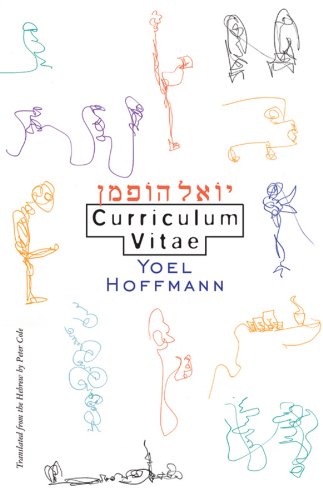Curriculum Vitae
Part fiction, part memoir, Hoffmann’s novel could mean many things to readers, or it could mean nothing. Written as a series of 100 brief segments (“essays” is far too formal a description), the book is comprised of recollections, aphorisms, and stream-of-consciousness statements that range from nonsensical dreams to deeply meaningful allegories, all interspersed with simple (and mostly abstract) line drawings of people mentioned in the text. There is no traditional narrative, no beginning, middle, and end, but after reading the volume, one has a sense of Hoffmann the writer, and the major influences in his life—his family, his wives and children, his travels, and his studies, from Europe to Palestine to Japan.
The “historical fiction” appellation comes from Hoffmann’s inclusion of glimpses of Jewish life in Europe and the Middle East from World War II to the present. Hardships are briefly mentioned, as are deaths, births, celebrations. Memories of everyday occurrences (one of Hoffmann’s sons watching television) illuminate the more meditative segments (poems the Japanese say before death), and together all the pieces do create a whole of sorts. By the time I hit this segment: “It’s all so self-evident why Joyce wrote, for some twenty years, a book without any real words in it,” somehow it made sense to me as well. Asking me to explain it, however, would take more stream-of-consciousness statements than there’s room for here. If one is looking for an outside-the-box tale with tantalizingly brief glances into an author’s life and mind, this volume of puzzles (and rewards) just might fit the bill.










